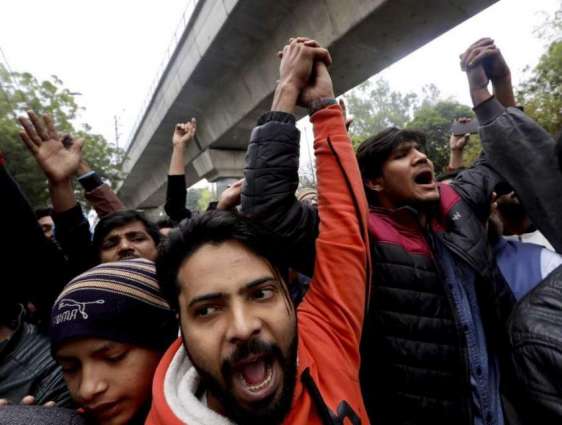Students at 36 major universities and colleges across India staged peaceful protests on Tuesday against a recently introduced citizenship law, which is seen as discrimination against the country's Muslim minority, Indian media reported
NEW DELHI (Pakistan Point News / Sputnik - 17th December, 2019) Students at 36 major universities and colleges across India staged peaceful protests on Tuesday against a recently introduced citizenship law, which is seen as discrimination against the country's Muslim minority, Indian media reported.
Last week, the Indian parliament passed the bill, which allowed citizenship for Hindus, Buddhists, Jains, Christians, Sikhs and Parsis facing persecution in neighboring countries. Muslims were excluded from the right to citizenship under the bill, with the exception seen as a fresh discriminatory attempt to sideline the nearly 200-million-strong Muslim community.
According to the Times of India newspaper, protests involving Muslim students are taking place in the Indian cities of Mumbai, Chennai, Lucknow, Cochin, Calcutta and others, totaling to over 10,000 protesters.
The students demand the abolition of the amendments to the citizenship law. The protesters also expressed solidarity with students from the Aligarh Muslim University in the northern state of Uttar Pradesh and the Jamia Milia Islamia University in New Delhi, which will remain closed for the next three weeks due to recent student-held protests that turned into violent clashes with the police.
Indian Muslims believe that the new law violates the constitution, as it oppresses a group of citizens in a formally secular country on religious grounds. The residents of the country's north-eastern states were also angered, fearing that now millions of people from Bangladesh could legally settle in their regions, which could threaten the interests of the local population.




